Search the Special Collections and Archives Portal
Search Results
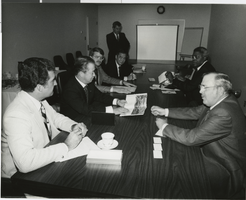
Photograph of Ron Lurie with Japanese officials, October 1, 1982
Description
Label on back: Meeting with Japanese officials regarding financing for high speed train, October 1, 1982 - Clockwise: Commissioner Ron Lurie, Yoshiro Hayashi, Member - House of Representatives, Mike Daly, Taiji Kohara, President of International Relations for Tokyo, Russ dorn, Bud James, Keefe Corp., and Commissioner Paul Christensen
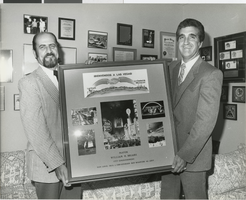
Photograph of Ron Lurie (right) with Judge Seymore Brown, with presentation for Mexican Government, September 15, 1982
Description
Handwritten on back: Judge Seymore Brown & Commissioner Ron Lurie Presentation for Mexican Government, September 15, 1982
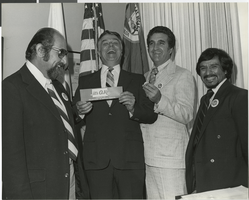

Photograph of Ron Lurie with a group at a groundbreaking event (possibly for McCarran Airport), 1983
Description
Note with photograph: This Material is Sent to You Courtesy of the Folks at McCarran International Airport (Las Vegas, Nev.), with business card from James J. Balk Community Relations Director; stamped Received September 22, 10:25AM, 1983
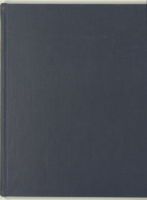
Nevada Library Notes
Date
Description
Nevada Library Notes, Vol. 8 issued by the Nevada State Library. Materials about the news of library activities and articles for publication by Nevada librarians.
Text

Nevada Library Notes
Date
Description
Nevada Library Notes, Vol. 1-4 issued by the Nevada State Library. Materials about the news of library activities and articles for publication by Nevada librarians.
Text
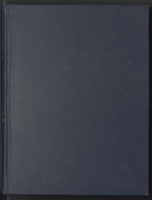
Nevada Library Notes
Date
Description
Nevada Library Notes, Vol. 5-6 issued by the Nevada State Library. Materials about the news of library activities and articles for publication by Nevada librarians.
Text

Nevada Library Notes
Date
Description
Nevada Library Notes, Vol. 7 issued by the Nevada State Library. Materials about the news of library activities and articles for publication by Nevada librarians.
Text

Transcript of interview with Darrin Bush by Claytee White, June 30, 2016
Date
Archival Collection
Description
In 1948 in Las Vegas, Nevada, a camera-girl-turned-cocktail-waitress and a casino credit manager welcomed the birth of their son, Darrin Bush. After attaining his education at St. Joseph’s Catholic School and Bishop Gorman High School, Bush earned his Bachelor’s degree in journalism at the University of Nevada, Reno. Bush credits his love for photography to his mother’s influence and his study of journalism. Bush’s first job after college as a room service waiter at the Sahara Hotel eventually grew into the coveted position of room service swing captain. His swing shift duties included the entertainers' dressing rooms, which meant taking care of the entertainers, getting them what they needed, and stocking their favorite foods and drinks nightly. Through his work, Bush eventually formed close friendships with several celebrities of the day. He enjoyed his work, but he never stopped honing his skills as an amateur photographer. In the mid-1980s, Bush left the Strip to become a professional photographer for the Las Vegas News Bureau. Throughout his News Bureau career, Bush photographed the casino buildings made famous by Las Vegas-the construction and the architecture of Southern Nevada’s gaming palaces-as well as iconic events in Las Vegas history. Darrin retired from the News Bureau in about 2014, but his work recording the building of and events of Las Vegas lives on in the News Bureau archives. He continues to be an avid photographer.
Text

Transcript of interview with Roger Thomas by Stefani Evans and Claytee D. White, August 31, 2016
Date
Archival Collection
Description
As he reveals in this oral history, Roger Thomas is, among many other things, a son, a father, a brother, a husband, a student, an artist, a visionary, and a philanthropist. As the second son of Peggy and E. Parry Thomas’s five children, Roger was raised a Mormon child of privilege and civic responsibility. The banking family summered in Newport Beach, wintered in Sun Valley, and taught their children by words and deeds that it is not up for debate if you will be involved in your community; the only question is how you will apply your talents and resources to benefit your community. Roger absorbed the lessons well. As a child who struggled in school but excelled in art, he attended his last two years of high school at Interlochen Arts Academy, graduating in 1969, finally finding himself “in an environment where what I did had currency.” From there he earned his BFA from the School of the Museum of Fine Arts Boston and Studio Degree from Tufts University before returning to Las Vegas and eventually joining Steve Wynn’s team in 1981. As Executive Vice President of Design for Wynn Design & Development, he is the man in whom Steve Wynn places his trust to make real at each Wynn property the Wynn design philosophy: aim for a constituency of highly sophisticated, well-traveled, very educated people and give them a reality, a now, that is so fetching, so alluring they wish to be no place else. As he was mentored by his father and Steve Wynn, he too is mentoring those who will follow him. At Wynn, the next generation will carry forward the Wynn idea of evoca-texture, of creating “moments of experiential emotion that result in a memory so captivating and so unique that if you want to repeat that you have to come back.” At home, he collaborates with his daughter on a children’s book that has the potential to become a series; she is the illustrator, while he provides the words. Roger Thomas sat for this interview five days after his father, E. Parry Thomas, passed away in Idaho. Instead of postponing the interview to a more convenient time, Roger kept the appointment and explained, “This is for UNLV. If I’d cancelled my father would have killed me.”
Text
